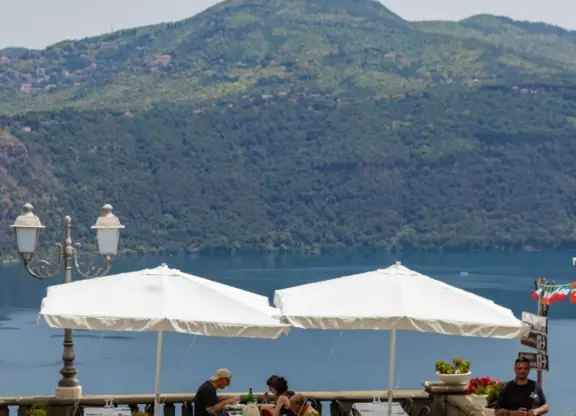Cindy Tan knows the history of Jakarta's Chinatown very well. A lesser known area for foreigners visiting Indonesia's capital city, Cindy enthusiastically gives her visitors a personalized walking tour around the city, exploring its small alleyways and forgotten areas.
“This is Chinatown. When people think about it, they think it’s just a place or a market. But this place keeps a very important and long history of Jakarta. Even some of us Chinese people who have been here for ages do not realize that,” says Cindy who now works as a tour guide.
Jakarta Good Guide does several tours focusing on historical buildings still present in Jakarta, especially those that date back from the Dutch colonial era. But their most popular tour is of Chinatown, an area that has existed since the 16th century and where ancient Chinese-styled houses can be seen standing next to modern buildings.
Candles burning at Dharma Bhakti temple.
The tour starts at Candra Naya, an elegant building that was built in the 19th century. The owner of the house was killed during the Japanese occupation of Indonesia in 1942. Since then, the house has been attracting hundreds of visitors daily.
Moving on, about 600 meters away from the Candra Naya building, is the busy wet market of Glodok. Everything from fresh fruits, local Chinese vegetables, sweetbreads to Chinese greeting cards and teacups can be found here. It is a bustling street filled with different kinds of smells, sounds and colors.
The next stop are two of the oldest temples in Jakarta:
Dharma Bhakti and Toasebio.
Blessing cards at Toasebio temple.
Dharma Bhakti Temple dates back to the 15th century. It was burned down in 2015 after an incident involving one of the many lit candles inside the temple. The building was immediately rebuilt after the incident but there are still many places under construction inside. That did not stop visitors from swarming the temple daily, still intrigued about learning its magnificent history. It also happens to be Cindy’s favorite stop on the tour.
“That’s the first building that was built here and it has been here for ages. It shows the history of my grandfather’s grandfather coming here and I can relate to that. That’s why I like Chinatown so much. When you’re here you feel like you’re in China out of China and to me that feels like home,” says Cindy.
Kopi Es Tak Kie has been around since 1927.
The last stop of the tour takes us to Gloria Alley, an area famous for its wide array of Chinese cuisine. Succulent pork belly, savory water spinach noodles and refreshing iced coffee can be enjoyed in this small alley.
Kopi Es Tak Kie is one of the most popular cafes on the alley. Founded in 1927, it still stands today, catering authentic Chinese food and its famous iced coffee with a splash of milk.
“I really liked the tour and I really enjoyed it because I went to places I’ve never been before. We went to places that are not exposed in tourism media so it’s really nice and I learned a lot more about Chinese community in Indonesia. It’s fun and I learned so much than I expected I would,” says Akib, one of the tourists who joined the walk.
A traditional Chinese teahouse in Glodok.
Indonesians have long adapted Chinese culture into their local lifestyles, proving that the Chinese influence has been around for so long and continues to remain strong. Chinese-Indonesians have made up a significant proportion of the country’s population and it will continue to grow for generations. This tour allows visitors to understand that China has played an important role in Indonesia’s development for centuries.
(CGTN)
 简体中文
简体中文












